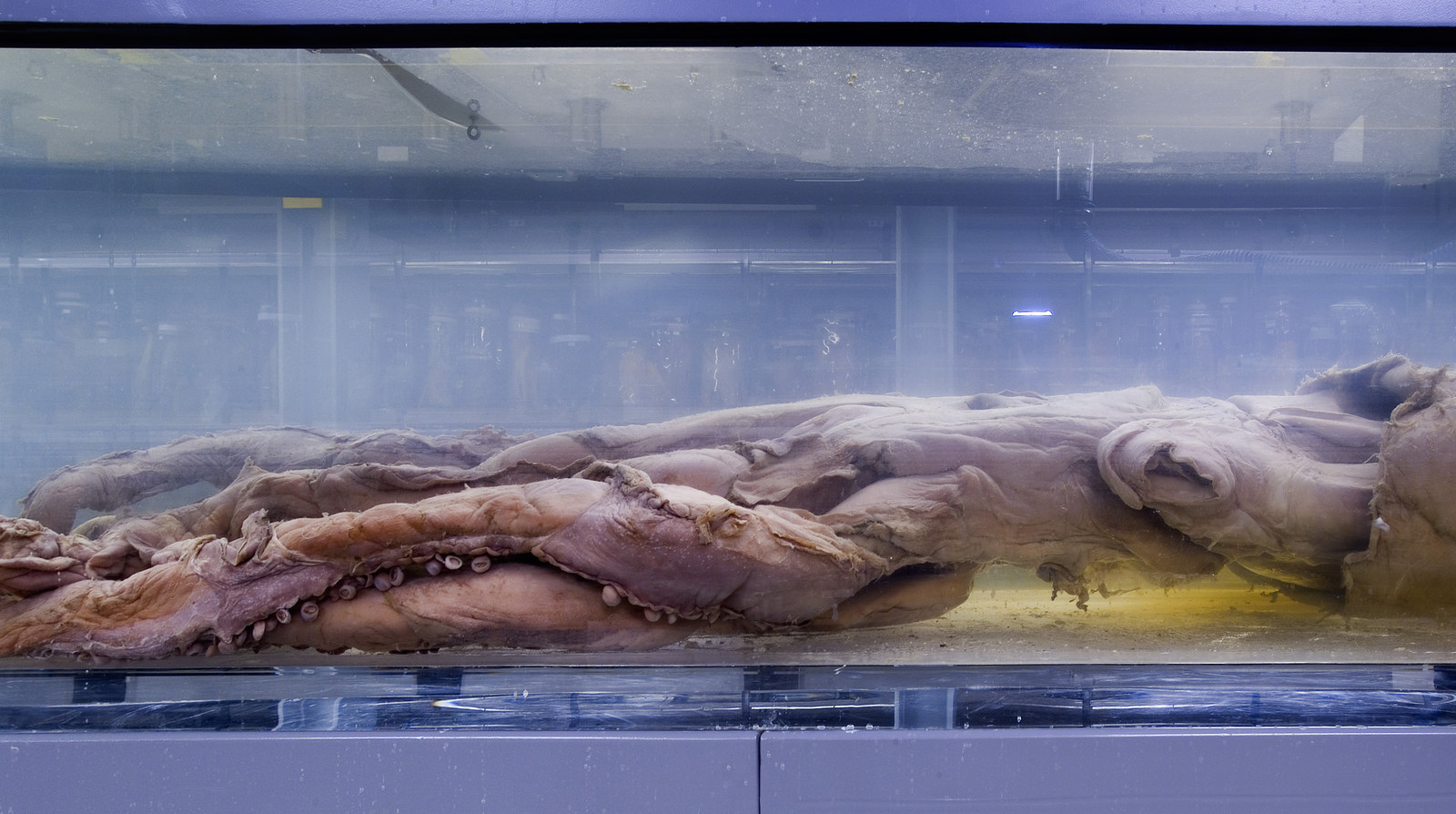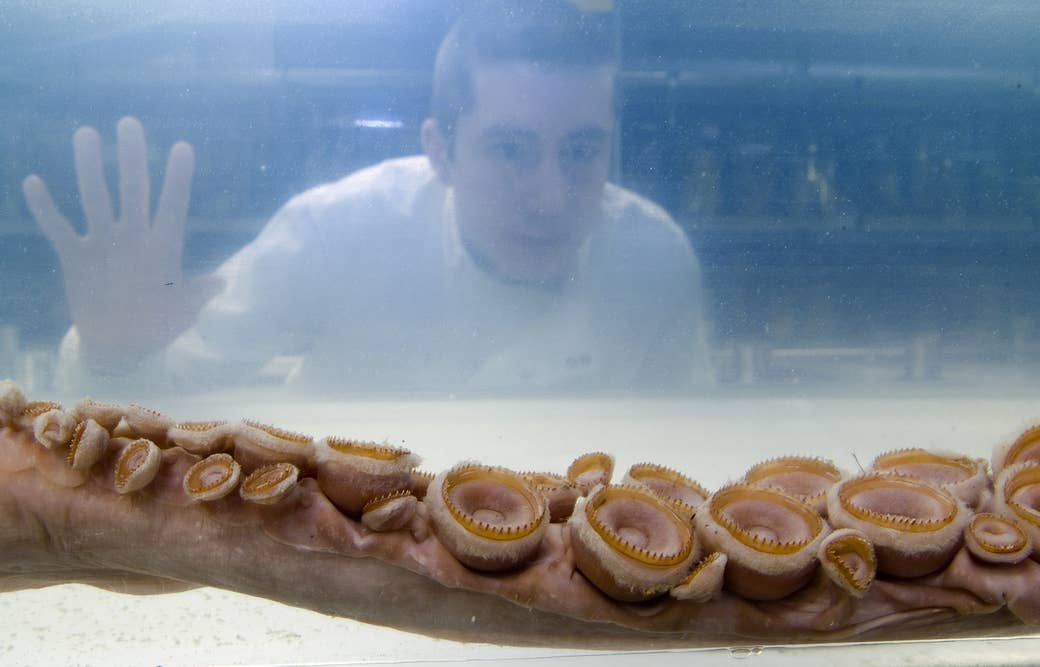
In March 2004, Jon Ablett got a call asking him if he wanted a giant squid.
The call came from the fisheries department in the Falkland Islands. Some local fishermen had accidentally trapped a massive, bright magenta squid in their nets 2km off the coast, dragged it on to their boat, and now didn't know what to do with it. They wanted to know if the Natural History Museum would take it off their hands, because what the hell else are you supposed to do when there's a giant squid on your boat instead of in the sea.
Ablett is curator of molluscs at the Natural History Museum, so he gets calls about caught specimens pretty frequently – the NHM has a constantly growing research collection kept out the back in the Darwin Centre, away from the main hall – but never about a giant squid. The closest you're likely to come to a giant squid in a museum would be the undigested bits of it that scientists have picked out of the bellies of sperm whales on whaling ships, or leftover pieces that have washed ashore. Fundamentally, you just don't get calls about a giant squid that was very recently alive, in one piece, on a boat somewhere off the Falklands.
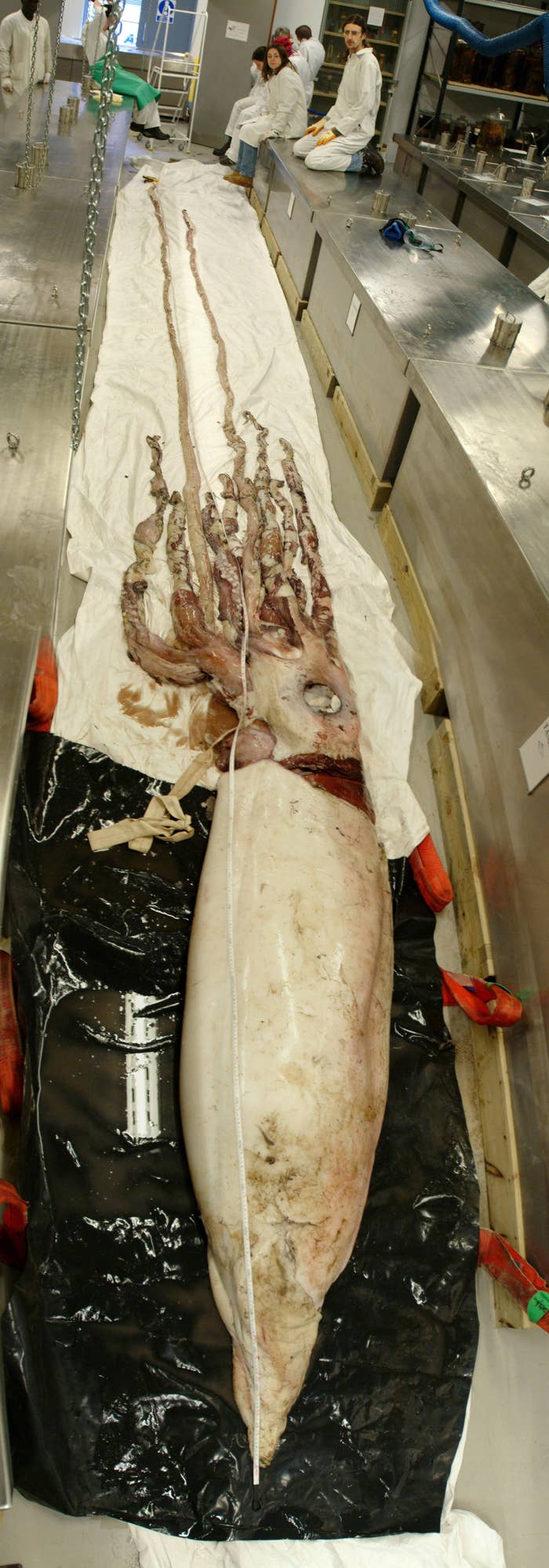
She – they think the squid is female – is no longer bright magenta. Squid have chromatophores, colour-changing cells, and it's likely the magenta she flashed as she was hauled aboard was some kind of warning colour; a war cry. Like everything else in the museum's Spirit Collection her pigment has faded away to a sad beige. That's why scientists used to commission paintings of specimens before submerging them in chemicals forever. It's little different today, except now they just take digital photos of things in their pre-beige prime. Modern science hasn't curtailed the fading of the fish in jars.
She lies lengthways down the middle of the room, her legs stretched out in a glass tank made by the same company who created the tanks for Damien Hirst's infamous tiger shark and cows.
Her name is Archie. They didn't know she was probably a she when they named her. Squid sexing is hard.

She's not alone in the tank: At the other end is half of a baby colossal squid, which are even rarer than giant ones. An adult colossal squid has never been found, but scientists estimate they can grow up to 20 metres, as opposed to the 14 metres of a fully grown giant squid. They think they grow to that size because they've found pieces of them: huge, inedible squid beaks found in the stomachs of whales that have eaten them.
Sperm whales are much better at catching deep sea monsters than we are.
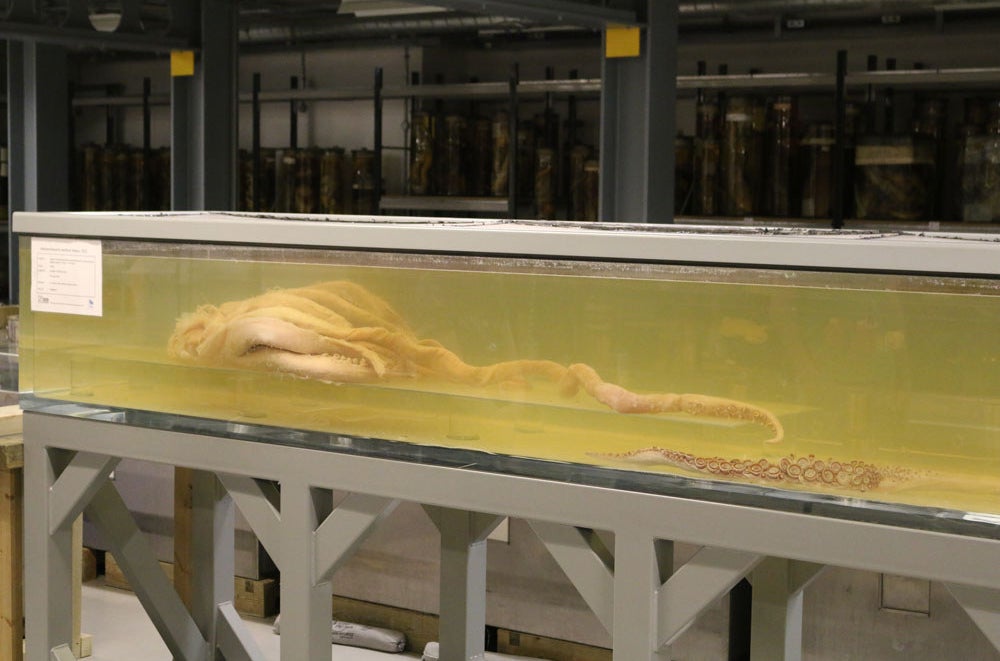


Ablett fishes what looks like a fist-sized parrot's beak out of a jar and makes it chomp like Pac-Man. "It's a hundred times harder at the hooked end, so it can cut through bone or shell or whatever, but this end is soft and squidgy so it doesn't tear through the muscles of the squid itself."
In other words, a beak designed to be bendy so it doesn't rip the owner's face off in battle.
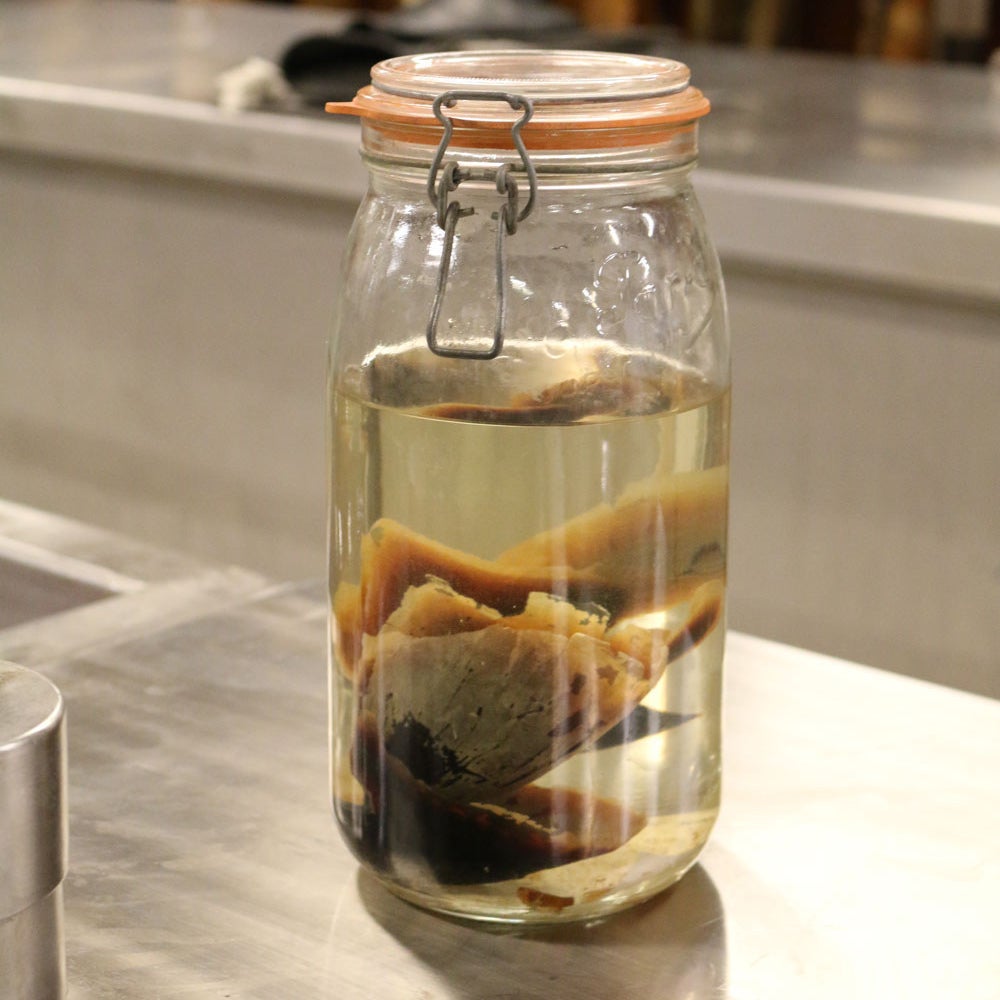
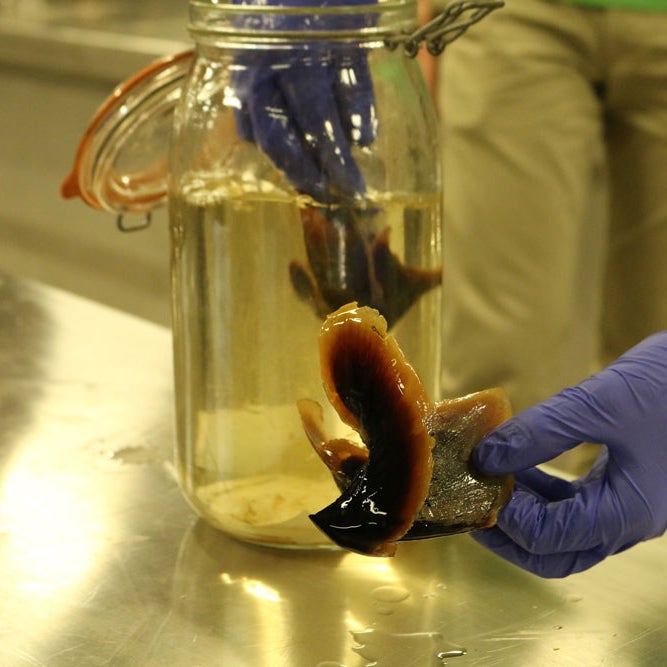
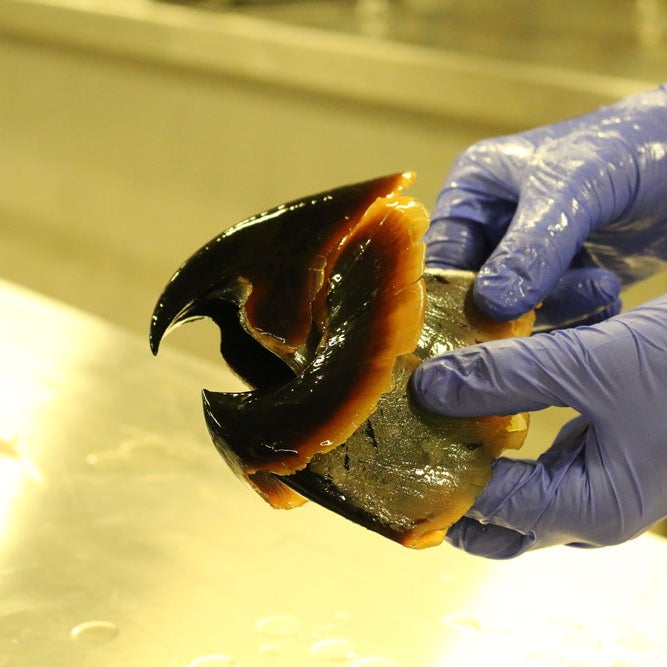
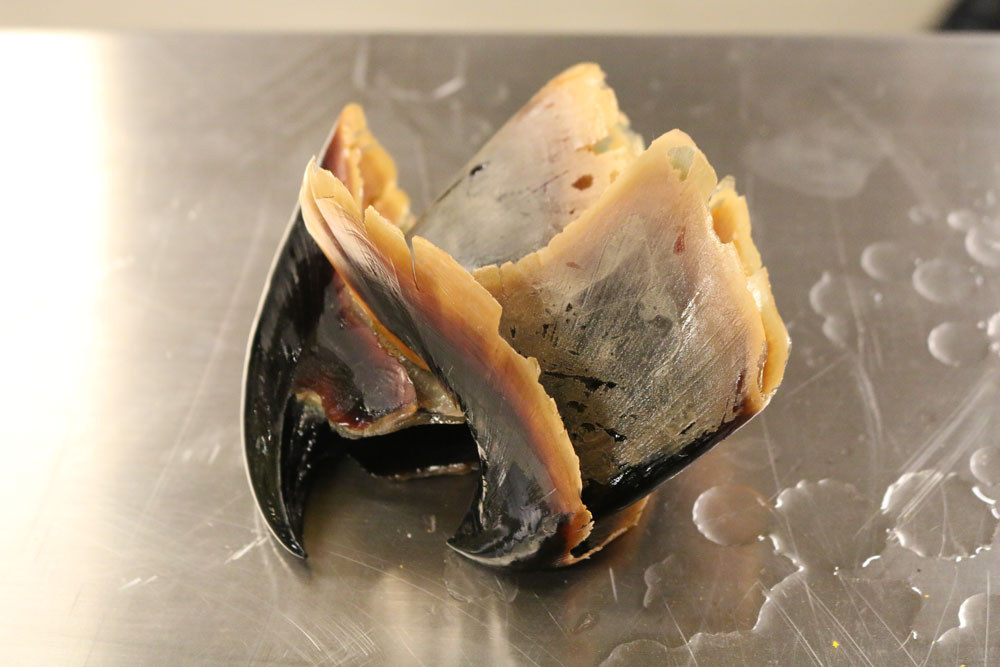
The fact that giant squid are so rarely found is as good a reason as any for the giant squid to be a pop culture mainstay – Pirates of the Caribbean, Lovecraft's Cthulhu (not Zoidberg though; he's more of a lobster). They're so hard to find that the first time a giant squid was caught on camera, the marine biologist who was there and saw it in real time did a TED talk about it. The writer China Miéville spent time at the Natural History Museum asking questions and getting the kind of answers you can only get from a close-up dead squid, and now there's a scientist in his novel Kraken with pretty striking similarities to Ablett.
Ablett stands next to the cloudy tank with the pickled squid in it and lays out some statistics:
She measures 8.62 metres in length and remains the largest wet specimen the Natural History Museum of London has ever preserved. No one has ever captured and preserved a giant squid as complete as this one. That said, she's missing part of a leg – but it's not her fault. The fact that she was so fresh meant a section of one of her tentacles could be immediately frozen for DNA research before decay set in.
In 2013, the DNA information obtained from the mantle (the main body of the squid) was used in a study that suggested that there is only one species of giant squid worldwide, even though they turn up everywhere but the Polar Regions and the equator. It's a relatively rare thing for there to be only one global species rather than several regional species of an animal that occurs in all the world's oceans. It means that the giant squid that washed up on the shores of Scarborough in the north of the UK in the 1930s is the same kind you'd find off the coast of New Zealand now, and the same kind you'll find in a tank in a backroom of the museum in South Kensington: Architeuthis dux. That's why they called her Archie.
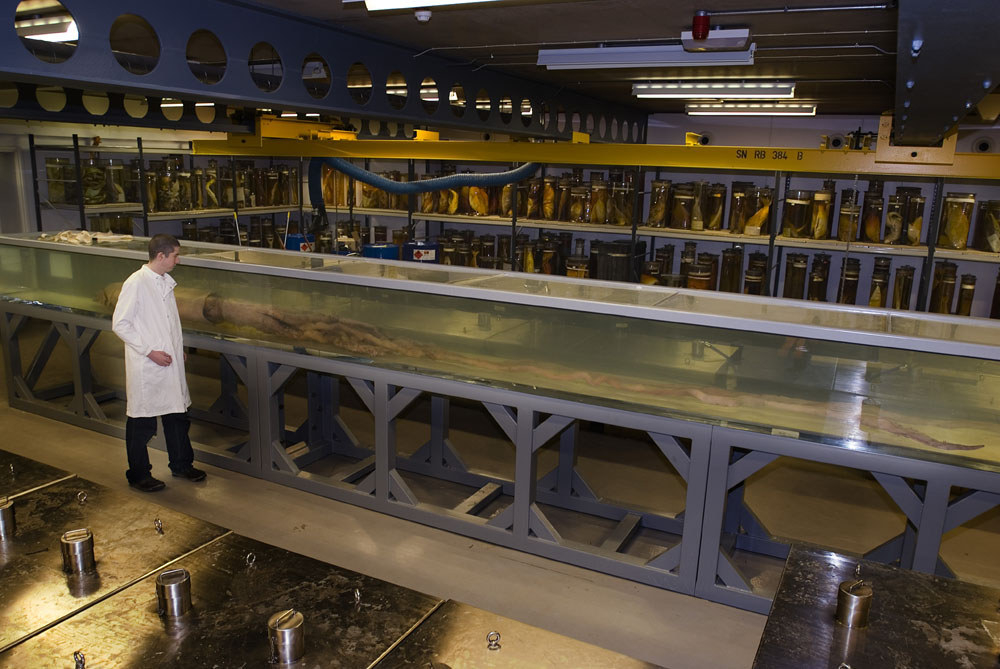
Archie can't be kept in the main halls of the museum because she's so massive: With the added weight of the chemicals and the glass tank she's lying in, Ablett guesstimates the whole thing weighs at least five tonnes. If she was wheeled out into the beautiful Grade I-listed building she would collapse the floor. Plus there's the litres of preservative to worry about – formalin is formaldehyde gas dissolved in water and has its own weird set of health and safety concerns. A vat of it like this needs to be kept in a location where the environment can be controlled with vents to prevent explosions and fire.
She may be massive but the thing that freaks you out the most when looking into the tank isn't the overall size of the squid. It's the individual details: the relatively magnified versions of everything else. Her eyes are 23cm in diameter, almost the size of a dinner plate. The suckers that cover Archie's tentacles aren't calamari-rubbery like you probably thought they were going to be. They're serrated hemispheres, like a thousand knife-edged melon-ballers. The sharp edges are made of chitin, a substance close to the stuff our own nails are made of. They tear through rubber gloves like they're nothing, as anyone who helped put her into her tank will tell you.
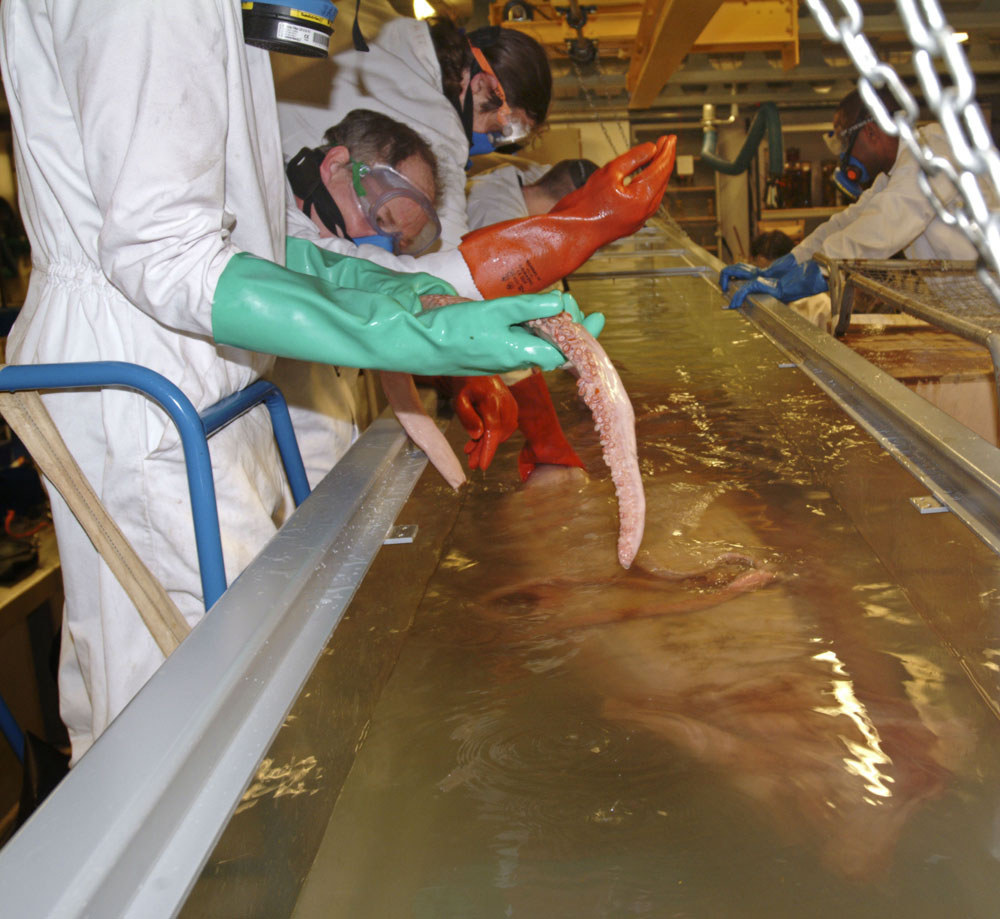
Ablett says Archie was so big he had to call in favours from curators all over the museum to figure out how to preserve her properly: She was such a rare specimen that he didn't want to screw it up, because you can't just go out and get another one. At any point during the process there were between 13 and 20 people lending a gloved hand. They moved her by making a stretcher out of a tarpaulin and some poles, and before she went into the tank, senior fish curator Oliver Crimmen slit the squid along the stomach and injected formalin straight into the centre of her body to bathe the organs in preservative. It fixes them, slows down the decaying process. (Crimmen is the same guy who helped Damien Hirst preserve his second tiger shark in 2006, after the poorly preserved original deteriorated as it sat in its tank in the Saatchi Gallery.)
All the googling and all the TED talks about giant squid in the world won't prepare you for what one smells like. Now that she's sealed in the tank, there's nothing to smell but the vague, all-pervasive aroma of chemicals in the room – but it wasn't always that way. The day they put Archie in her tank was a bleak one, according to Ablett.
"Giant squid have ammonia in their tissue which is released when they die, it smells a bit like urine," he says. "I got on the tube the day after and I still smelled so much of fresh squid that everyone got off at Knightsbridge. I cleared the whole carriage."
Ablett sincerely hopes he never has to move a giant squid again for the rest of his career. So if you want to see her, you'll have to go to her.
